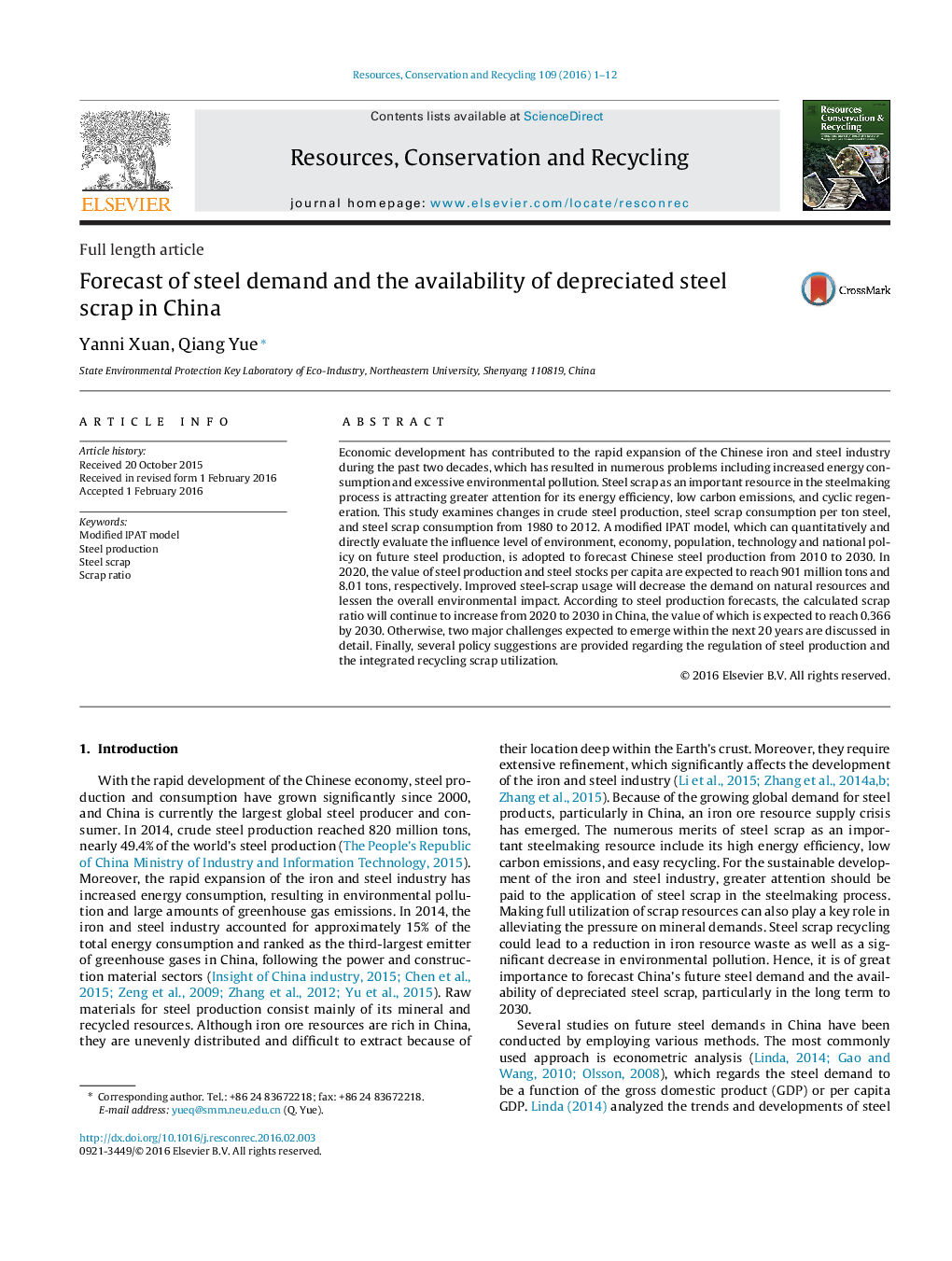| Article ID | Journal | Published Year | Pages | File Type |
|---|---|---|---|---|
| 7494862 | Resources, Conservation and Recycling | 2016 | 12 Pages |
Abstract
Economic development has contributed to the rapid expansion of the Chinese iron and steel industry during the past two decades, which has resulted in numerous problems including increased energy consumption and excessive environmental pollution. Steel scrap as an important resource in the steelmaking process is attracting greater attention for its energy efficiency, low carbon emissions, and cyclic regeneration. This study examines changes in crude steel production, steel scrap consumption per ton steel, and steel scrap consumption from 1980 to 2012. A modified IPAT model, which can quantitatively and directly evaluate the influence level of environment, economy, population, technology and national policy on future steel production, is adopted to forecast Chinese steel production from 2010 to 2030. In 2020, the value of steel production and steel stocks per capita are expected to reach 901 million tons and 8.01 tons, respectively. Improved steel-scrap usage will decrease the demand on natural resources and lessen the overall environmental impact. According to steel production forecasts, the calculated scrap ratio will continue to increase from 2020 to 2030 in China, the value of which is expected to reach 0.366 by 2030. Otherwise, two major challenges expected to emerge within the next 20 years are discussed in detail. Finally, several policy suggestions are provided regarding the regulation of steel production and the integrated recycling scrap utilization.
Keywords
Related Topics
Physical Sciences and Engineering
Energy
Renewable Energy, Sustainability and the Environment
Authors
Yanni Xuan, Qiang Yue,
